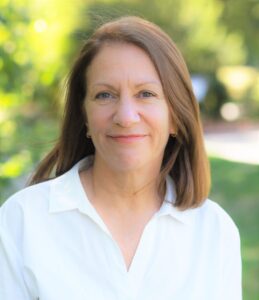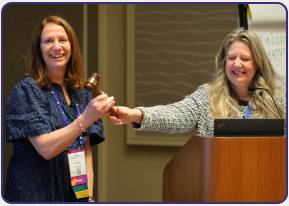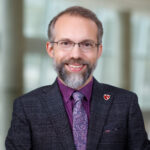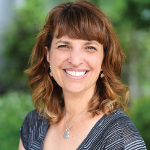
Aileen Ledingham, PT, MS, PhD
Aileen Ledingham, PT, MS, PhD, identifies first and foremost as a physical therapist, which is why she always lists her physical therapy (PT) title first in the string of credentials following her name. Now, she has another title to add: president of the ARP.
Dr. Ledingham earned a bachelor of science in physical therapy at Northwestern University, a master of science in pediatric physical therapy and research at Long Island University, New York, and a doctorate in rehabilitation sciences from Boston University. During her career, she has held PT positions in the U.S. and abroad, and is currently a physical therapist at Mount Auburn Hospital, Cambridge, Mass., where she specializes in rheumatology, particularly PT for older patients with knee issues.
She began volunteering with the ARP as a doctoral student, serving first on the ARP eLearning Subcommittee, which focuses on state-of-the-art technologies and interactive learning strategies to foster online education opportunities for rheumatology professionals. Dr. Ledingham eventually became chair of that committee. She has also volunteered on numerous other ARP and ACR committees, including the ACR Finance Committee. She is just finishing up a year as co-chair (with new ACR President Deborah Dyett Desir, MD) of the inaugural, blended ACR/ARP Membership & Awards Committee (MAC).

Dr. Ledingham accepted the presidential gavel during the ARP business meeting at ACR Convergence 2023.
In her new position as ARP president, Dr. Ledingham looks forward to continuing the forward momentum of the association as an active, relevant and responsive organization that works on behalf of practitioners while also furthering improved patient outcomes. In the coming year, she is especially interested in exploring new ways to build greater public knowledge about the field of rheumatology and the many ways that patients benefit from the expertise of rheumatology professionals.
As she takes the helm of the ARP, Dr. Ledingham spoke about her career so far, why she is such an enthusiastic volunteer and how she foresees the ARP’s role in promoting rheumatology, supporting practitioners and, ultimately, caring for patients.
The Rheumatologist (TR): You started out in physical therapy. How did your career evolve toward rheumatology and to becoming involved with the ARP?
Dr. Ledingham: My initial path to physical therapy was kind of haphazard. When I was a junior in high school, we students were all looking at books to figure out what our careers might be. Physical therapy just kind of popped up in one of the books, and I thought, ‘That sounds interesting. I don’t have to be a doctor or nurse, and I don’t have to deal with too much blood!’ So, I went ahead and got my bachelor’s degree, became a physical therapist and was pleasantly surprised by how much I loved the job.
From there, I developed a specialty in pediatric physical therapy, working with kids of all ages, including … neonatal [patients]. But it wasn’t until I moved overseas for a while and came back to the U.S. that I shifted focus to the older generation and then into rheumatology.
TR: Would you describe that transition to rheumatology a bit more?
Dr. Ledingham: My transition to rheumatology was generated by an email announcing a predoctoral fellowship at Boston University Sargent College of Health & Rehabilitation Sciences. Although getting a PhD wasn’t on my radar, the opportunity was too awesome to pass up. I became a research assistant for a randomized controlled trial investigating exercise adherence among adults with knee osteoarthritis. This experience was my initiation to the field of rheumatology and my link to the ARP.
I went to my first annual meeting in 2011, and I was completely and pleasantly surprised by the diversity. There were Americans, Canadians and international [attendees]—physicians, nurses, pharmacists, PTs, OTs, researchers. [The meeting included] anybody who had any interest in furthering the field and helping people with rheumatic conditions. And they were all at this conference sharing, talking and laughing. I found myself in an environment where people were excited to learn and mingle with like-minded people. It was simply overpowering, and I was hooked.
TR: You have become a very active volunteer for both the ARP and the ACR since then. How did that come about?
Dr. Ledingham: My initiation into volunteering was with the ARP eLearning Subcommittee. At the time, I was still a doctoral student. I rose up the ranks in that committee, and when I was asked if I wanted to be chair-elect, I said yes. As chair of the eLearning Subcommittee, I became a member of the ACR Committee on Education and was invited to be part of the Education Strategic Plan Task Force. I also spent two years on the ACR Finance Committee. This past year, I was co-chair of the MAC, which was important because it was the first year it was a joint committee between the ACR and the ARP.
TR: What is the significance of the joint approach to the MAC?
Dr. Ledingham: It is the first time that we’ve had such an arrangement between the ARP and the ACR, where we have co-chairs—the president elects from the ARP and from the ACR—and both ARP and ACR members serving on the committee. It has been exciting to have this experience of sharing a leadership role with the ACR president elect and creating a unified committee that took the best pieces of what used to be separate committees and brought them together. I think we got the best of two similar but different worlds.
TR: Is this the beginning of other joint ACR/ARP committees?
Dr. Ledingham: Time will tell. But I hope so, because I think everybody on the MAC became aware of things that they never would have thought about and heard other perspectives, such as that of a physician, researcher, PT, nurse practitioner or physician assistant. We were all at the same table having really free-flowing conversations, not as representatives of the ACR or the ARP, but as MAC members. I think it has been very successful and see no reason not to build on this joint approach with other committees.
TR: Thinking about the ARP in the coming year, what initiatives do you hope to pursue?
Dr. Ledingham: Along those lines, we’ve been reviewing our strategies, including looking into whether the ACR and the ARP could be collaborating more because we all know you have more success when you have different voices at the table. My drive is to keep this momentum going, with more shared responsibilities within the College and more collaboration among different segments of the College.
We’re also looking at strategies for educational programs. The eLearning Subcommittee was at the forefront of initiating online educational programming at the ARP. That went into a bit of a holding pattern due to shifting priorities associated with COVID-19, but I’d like to get back to building up and improving the online educational platforms, especially now that technology has advanced and we are all more adept at using it.
TR: What do you see as some of the biggest obstacles for rheumatologists and rheumatology professionals in the long term?
Dr. Ledingham: I believe the biggest obstacle right now is a lack of public understanding of the role that rheumatology professionals play in healthcare, which means we need to do a better job of promoting the big picture of what rheumatology professionals can offer patients and do this in a pragmatic way. Diagnosis and medications are part of that, but so are care for things like depression, fatigue and social determinants of health. I think that we within rheumatology see that big picture, but I don’t think the public does. We should work to change that.
TR: Finally, what is something you would like to share about yourself to help ACR/ARP members get to know you a bit better?
Dr. Ledingham: I lived in the United Kingdom for five years, working as a physiotherapist for the National Health Service (NHS) in Portsmouth, Hampshire. In about a year’s time, I became the manager of pediatric physiotherapy. This was a phenomenal experience for me—professionally and personally.
I will never forget my first time treating a patient: a boy about 9 years old with cystic fibrosis in the hospital. I knocked on the door, said hello and walked into the room. There he was, standing in the middle of the room, and with his south coast English accent, he immediately asked, ‘Are refrigerators really that big in America?’
Any apprehension I had about being in a foreign land disappeared, and I thought, ‘Kids will be kids; I’ve got this.’
Leslie Mertz, PhD, is a freelance science journalist based in northern Michigan.


